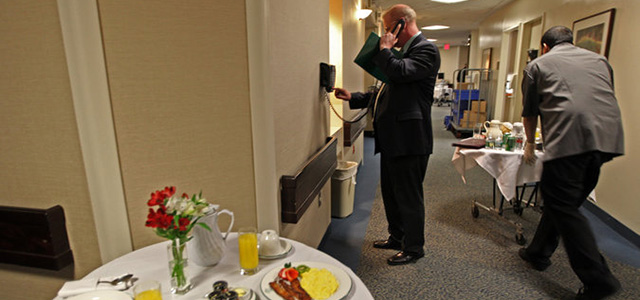News
How Hospitals Coddle the Rich

WHEN I saw my first red blanket as a young medical student, I thought little of it.
One morning, as I rushed around a hospital in California on my daily rounds, I spotted an old man who lay in bed beneath a scarlet cover, a sharp contrast to the white linens wrapped around the other patients. He looked unremarkable, and I assumed he brought the blanket from home. So I moved on. He wasn’t my patient, anyway.
That afternoon, I overheard a discussion about the patient between two physicians. Instead of identifying him in the usual manner — age, gender, medical problems — one of the doctors said, “This is a red blanket patient.”
The significance became clear after I took care of my own red blanket patients: It was a marker of status. At that hospital, patient relations gave them to some C.E.O.s, celebrities and trustees’ friends. Although we weren’t instructed on how to treat the V.I.P. patients, the blanket spoke for itself: “This patient is important.”
Today, I work at a hospital in Massachusetts that gives the same white blankets to everyone. Yet I continue to see red blanket patients. Here, they are called “pavilion patients” because they pay extra to stay in private hotel-like rooms on the top floor, which come with gourmet food, plush bath robes and small business centers.
Whether red blankets or luxury suites, elite services exist in various forms at hospitals around the country, and are nearly universal at the most prestigious medical centers. Of the nation’s top 15 hospitals, ranked by U.S. News and World Report, at least 10 offer luxury treatment options.
Some physicians suggest that V.I.P. services are a harmless way to raise money. Wealthy patients can afford to pay over $1,000 a night for deluxe rooms. More important, if V.I.P.s have good experiences, they might make big donations. At some cancer centers, doctors are even trained to solicit donations themselves. It makes sense. With more money, the hospital can improve its overall service. It’s trickle down health care.
But are red blankets really harmless?
Regular patients lose when hospitals dedicate their best spaces to elite units. One study found that patients in a room with a view of nature recovered faster from gallbladder surgery than those who faced a brick wall. Even having a room with more sunlight has been associated with decreased patient stress and use of pain medications. The University Medical Center of Princeton built new rooms with better aesthetics and found that patients who recovered from surgery in those rooms required 30 percent less pain medication than patients in old rooms.
Hospitals that provide faster care to some emergency room patients might negatively affect others. A doctor in Connecticut surveyed the directors of 32 emergency departments around the state on whether they gave faster treatment to V.I.P.s in their emergency rooms. Most responded, and all but one supported the practice. Regular patients who are well enough wait a little longer, which prompted the doctor to call the practice “vaguely unethical but necessary.”
When I describe luxury medicine to people outside of health care, they initially worry that it might lead to inferior medical care for nonelite patients. This is understandable. At most hospitals, doctors care for several patients at once. Although I have never observed a doctor neglect someone for a red blanket patient, we lack data to properly assess.
Surprisingly, many doctors worry that V.I.P.s receive worse care. I’ve heard countless stories of elite patients who underwent unnecessary tests or were treated with medications unlikely to be helpful because the physician felt pressured to appease them.
This can distract from optimal treatment. At least one study suggests that higher patient satisfaction is correlated with worse outcomes. When the University of Pennsylvania’s health system built a V.I.P. unit in 2007, faculty members were concerned that “similar units at other institutions provided excellent amenities but inferior nursing and patient care.”
On the record, doctors say that they treat all of their patients equally. Off the record, they reveal a range of answers. I, too, have been guilty of giving special treatment to red blanket patients.
Once, one of my patients — the head of a major local business — was ready to be discharged. As I entered his room to share the good news, I was greeted by the smell of flowers. They were in a vase on the bedside table, and I wondered if his wife or patient relations brought them.
When I told him that he would be going home, he frowned, and his wife spoke up.
“Doctor, I’d feel more comfortable if we stayed another night, just to be safe.”
Although there was no medical reason for him to stay, I smiled politely and said, “Yes, that’s absolutely fine.”
Would I have done the same if his blanket had been white?
Though some doctors find the practice to be harmless, and others may describe it as “unethical,” all seem to have deemed luxury health care necessary. Amid budget cuts, reduced reimbursements and rural hospital closures, it’s hard to argue with that sentiment.
But if we don’t challenge the necessity of luxury services, then we have accepted that hospitals — and medicine in general — prosper in part because they cater to the wealthy. This undermines the fundamental ideals of medical training.
The real harm of red blankets is in an unanswered question: When I allow one of my patients to be labeled “important,” do I implicitly label the others as less important?